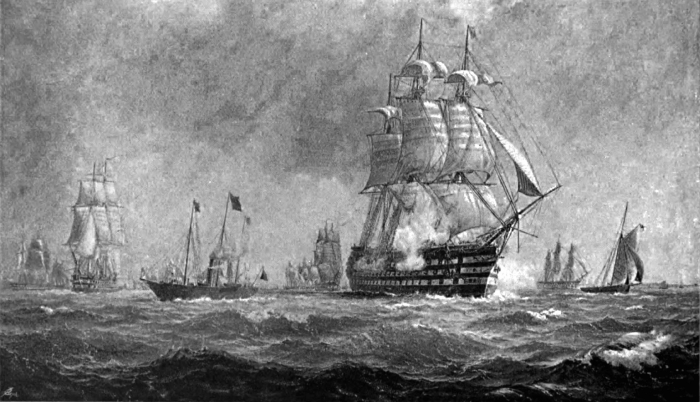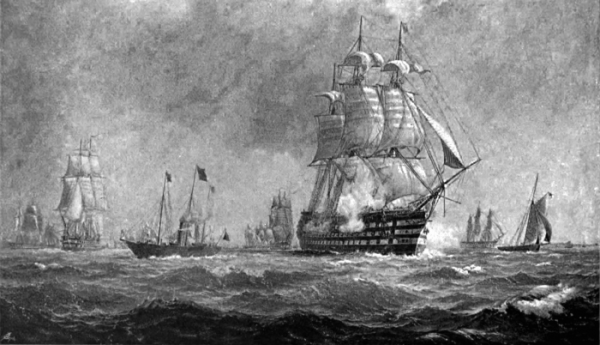The second son of Oba Oshinlokun (sometimes called Eshinlokun) of Lagos, Kosoko became the 12th oba of Lagos in 1845, a reign that turned out be short-lived. Kosoko was born to the house of Oshinlokun, who bore 15 other children.
Read more about History Trivia
The events for which he would be best known in the history of the fishing settlement was Lagos were set in motion long before he was born in his father’s nearly forty-year reign. The period after Kutere’s death was characterized by succession struggles and hence was characterized by the short reigns of his descendants.
It is not clear when Kosoko was born but this is what we know: he was born to royalty within which Lagos Obas had been drawn from the time of his grand-father, Ologun Kutere. Kutere. In fact, the sons of the House of Kutere would take turns to assume the kingship until Kosoko became oba in 1845.
Kosoko’s father, Osinlokun, succeeded Kutere’s designated heir, Adele Ajosun, in 1775 when he was deposed by the traditional kingmakers, the Akarigbere. Five years later, Adele, was banished. Osinlokun would reign for thirty-nine years till his passing.
The throne would then pass to his brother, Idewu Ojulari, who became Oba but was an unpopular king and was eventually asked to abdicate and commit suicide as was the tradition set by their former overlords, the Oba of Benin. He died without a child. Oluwole (son of Adele Ajosun) and Akintoye (another son of Kutere) will follow in short reigns before Kosoko eventually became king.
The previously established context is key in understanding the tumult that greeted Kosoko’s tussle for power with Akintoye, his uncle and Eletu Odibo (head kingmaker). The struggle with Eletu Odibo ensured Kosoko did not become Oba without a great tussle.
Sign up to the Connect Nigeria daily newsletter
Eletu Odibo’s grouse with him was that he had seduced and eventually married a young woman the nobleman had had his eyes on. The war with Akintoye and Eletu Odibo will hamper Akintoye’s reign as king. The events that followed were largely rooted in this beef.
The bad blood between both men escalated when Eletu convinced Oluwole (Oba at the time) to banish Opo Olu (Kosoko’s sister) charging her with witchcraft. It did not matter thaT she had been proven innocent. Eletu would go on to exhume Kosoko’s mother’s remains from its resting place casting them into the Lagos lagoon- a huge dishonour and taboo in Awori culture.
Thus began the first of Kosoko’s rebellions against the crown- the first of which would fail. That rebellion would become known as Ogun Ewe Koko (Coco-yam Wars). Upon failure, he fled to his maternal home in Epe. The story is told that it was a lightning strike that blew Oba Oluwole to pieces in his palace.
Such tales speak to more superstitious ends in retribution for previous wrongs. The more plausible tale is that Oluwole died in a gunpowder explosion at Iga Idunganran in 1841. The kingmakers would seek out Kosoko but Eletu would block that move and go on to make his uncle, Akintoye, the king instead.
Akintoye invited the aggrieved prince back to Lagos and even gave him a title to boot. Eletu would move from Lagos to Badagry, as a result, fearing the prince’s growing powers. Akintoye attempted to convince Eletu to return to Lagos, a move that led Kosoko to threaten rebellion if it ever came to pass. It was in these circumstances that Kosoko’s next rebellion will happen. Eventually, Kosoko’s faction led by Oshodi Tapa will rout Oba Akintoye’s forces at the Battle of the Salt Water on Agboyi Creek in 1845. Akintoye fled for Ikorodu from where he fled to Egba. Kosoko then exacted a painful revenge on Eletu. The old man was loaded alive into an oil drum and then set alight before being dumped in the lagoon.
Akintoye, in plotting to retake the throne, found eager allies in British Consul John Beecroft and the might of the British Navy and in 1851, Kosoko was removed against the backdrop of a severe bombardment of the Lagos docks. Kosoko fled to Epe again and would continue to torment Akintoye for the next three years until he was forced to sign the Treaty of Epe which got him to relinquish his claims to the Lagos throne.
He was allowed to return to Lagos in 1861 under Oba Dosunmu after years of being denied return to his home and reclaimed his old title and lands (Oloja of Ereko). The British government put him on a pension of 400 pounds.
He died in 1872 in his Lagos homestead of Iga Ereko. In many ways, the storied prince remains the most legendary of historical figures in Lagos history. Epe is originally Ijebuland but from the time of Kosoko, the excision of the area became more natural as Kosoko became a paramount ruler of the area under the Awujale of Ijebu.
Kosoko’s homestead still exists in Lagos and some of his descendants include famous personalities as Prince Jide Kosoko of Nollywood fame and pop star, Adekunle Kosoko (aka Adekunle Gold).
Source
Wikipedia
Featured Image Source: Medium
Got a suggestion? Contact us: [email protected]


